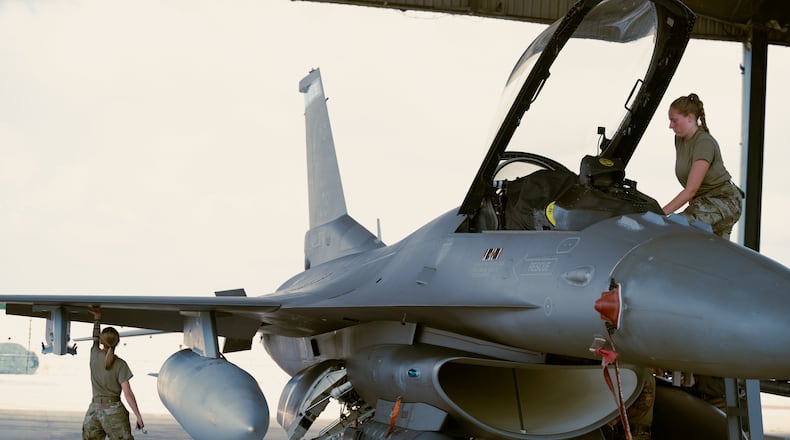The chock is so important, the Air Force has reconsidered its material. The service has begun using a new polyurethane chock designed and developed by University of Dayton researchers to secure aircraft tires.
“They’re very important,” said Eric Troidl, a University of Dayton Research Institute (UDRI) group leader and mechanical engineer. “Now I know way more about wheel chocks than I ever thought I would. They’re not a thing people give a lot of attention to until you have an aircraft move.”
In a project spanning several years, UDRI developed four varying sizes of chocks, two for fighter aircraft and two for larger cargo and transport aircraft.
The fighter chocks have been added to the Department of Defense Logistics Agency supply system, Troidl said in a recent interview.
“That was a big accomplishment, and we were very proud when we heard that,” he said.
The two larger chocks for cargo and transport aircraft are in the approval process, he said.
Wood chocks can be weakened by anything that weakens wood, primarily water and wind. Wood can warp or splinter, and those splinters can be sucked into an aircraft engine on start up.
Plastic chocks, which have been used for about two decades, have their own problems.
“Plastic chocks sometimes crush under the weight of the aircraft and they have little traction, so they can slide easily on most surfaces or float away in a heavy rain,” Troidl said.
UDRI said its chocks have a unique honeycomb design on their bottom, allowing a lighter weight while also imparting strength and durability.
They’re also less slippery on low-friction surfaces, UDRI said.
The university said its testing shows these chocks will last at least a decade, which UD estimates will save the Air Force $6.8 million in that time, compared to having to replace wood or plastic devices every six months to two years.
The wheel chock work was performed by UDRI’s Aerospace Product Support Engineering group under contract to the Air Force Life Cycle Management Center’s Support Equipment and Vehicles division.
The center is based at nearby Wright-Patterson Air Force Base.
Troidl said researchers from six additional UD groups across the institute supported the work when it came to impact testing, slippage and fluid-contamination testing, temperature cycling, ultra-violet light testing and more.
Troidl declined to disclose testing locations, but he said “a decent amount” of the testing of the chocks took place in a lab in Dayton.
Feedback from the Air Force so far has been positive, he said.
Said Troidl: “It is strong enough to hold up and hold the airplane in place.”
About the Author


